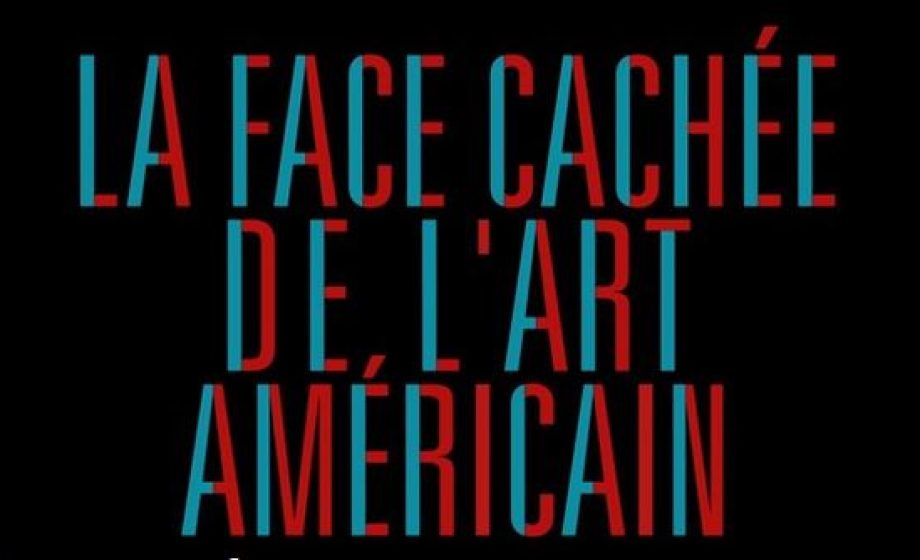François Lévy-Kuentz’s recent documentary called The Hidden Face of American Art, describes the strategies used to enable American art to overtake European art in the power struggle for influence during the Cold War. Narrated by François Marthouret and with commentary by many different historians and art historians, this film contains extensive photographs and archival videos. It covers the period of 1940-1960 and features countless stories from artists, collectors and art critics of the era. This documentary, a blend of the cultural, historical and political is being rebroadcast on France 3’s website
The documentary begins with archival footage from the Venice Biennale in 1964 which, for the first time awarded its Grand Prize to an American artist, Robert Rauschenberg, one of the precursors of Pop Art. While the French press was outraged, the biennale jury were obliged to acknowledge a reality: that the arts scene was shifting from Paris to New York.
The documentary then examines the events that made this triumph of American art possible. The first of them occurred in the summer of 1940 when Hitler invaded France. In response, to the growing peril, America sent journalist Varian Fry to France to help artists and intellectuals threatened by the Nazi regime escape to the United States. Piet Mondrian, Marc Chagall, André Masson were among those expatriates who settled in Manhattan. They soon found themselves among other painters who had be exiled there since the beginning of the war such as Marcel Duchamp and Alexander Calder. As early as 1942, Peggy Guggenheim, a patron of the arts who was married to German painter and sculptor Max Ernst, began exhibiting the work of the “French underground”. In the context of worldwide conflict where many American soldiers were mobilized, Peggy Guggenheim’s goal of selling European art to finance the emergence of American art is especially patriotic. And, in fact, the arrival of French painters, most of whom were part of the surrealist movement, brought life to the American arts scene. Many young people discovered and began experimenting with spontaneous writing and automatic creation through free association.
The end of the war and the images that followed the discovery of concentration camps as well as the bombings of Hiroshima and Nagasaki served to stimulate the American avant-garde. Yet its artists wondered how they could paint after such atrocities. The answer, according to Barrett Newman, one of the representatives of the growing abstract expressionism movement, “is to go back to the origins of art as if painting had never existed”. Artists like Jackson Pollock, Mark Rothko Willem de Kooning and Robert Motherwell, now free from the influence of the surrealists who had gone back to Europe at the end of the war, began taking risks in creating new shapes and techniques. Galleries multiplied and critics were enthusiastic. A new language developed, Robert Coates invented the term “abstract expressionism”, Harold Rosenberg invented “action painting” and Clement Greenberg, “colourfield painting”. America had the unbridled feeling of being in the midst of an artistic revolution.
After the surrender of their common enemy and Stalin’s refusal to accept the Marshall plan that was designed as a program of submission of European states, America and Russia soon became immersed in the Cold War. While America was a leader politically and economically it lacked a cultural foundation. Although the USSR advocated Soviet realism, the American government decided to support its emerging artists. Consequently, a cultural strategy was implemented to promote them in Europe. In 1947, the Minister of Foreign Affairs financed a major travelling exhibit called “Advancing American Art” that toured Europe. This exhibition had the stated ambition of presenting 79 pieces from committed figurative painters or from younger abstract painters.
But not everyone appreciated this policy of soft power. Many detractors of modern art opposed using public money to fund its creation. Conservative Howard Rushmore accused the government of financing communist artists. The government then decided to launch a major policy initiative to change the perception of modern art. With support from liberals, the recently created CIA had a mission to promote avant-garde art. The agency relied on the Museum of Modern Art (MoMa) and in particular its creator Nelson Rockefeller who had been acquiring many futuristic, expressionist and surrealist pieces since 1929 (Pablo Picasso, Salvador Dali, Henri Matisse, Marc Chagall and Amedeo Modigliani) as well as abstract expressionist pieces (Mark Rothko, Arshile Gorki and Jackson Pollock). American abstract art was no longer to be seen as a “communizing” art but as free and innovative art; it was to be seen as the embodiment of American societal values. The press supported this rhetoric concluding that this new art did not convey any political message but, on the contrary, a complete freedom which would have been unthinkable in a communist country.
At the beginning of the 1950s, the CIA promoted American art on the European scene by financing symposiums, exhibitions and cultural magazines in different countries. The power of radio also used to publicize artists. Then as the 1960s began, abstract expressionism was soon displaced by Pop Art whose images of products of mass consumption and the industrial process better embodied the ideals of American liberalism. Within a few years, New York became the new capital of the art world, a status that it still holds today.






